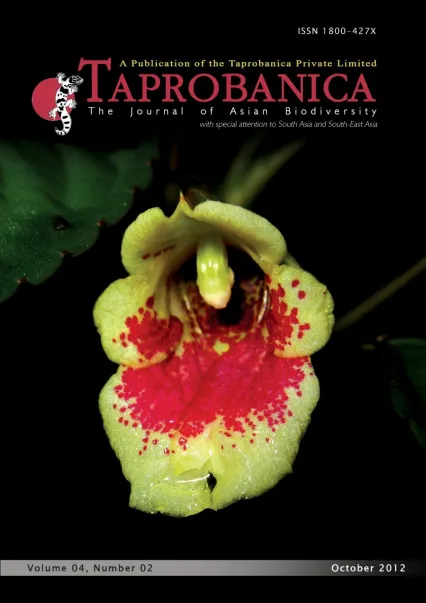

v4i2.78
Volume 4 | Number 2 | November 2012
Short Note
ISSN: 1800-427X (print)
eISSN: 1800-427X (online)
DOI:10.47605/tapro.v4i2.78
Submitted date: 26 March 2012
Accepted date: 28 October 2012
Published date: 14 November 2012
Pp. 105–107.
Carapacial scute anomalies of star tortoise (Geochelone elegans) in Western India
Raju Vyas*
*E-mail: razoovyas@hotmail.com
The basic taxonomy and classification of reptile species and genera often use pholidotic characters. Despite that each species has a standard pattern, there are always deviant individuals in terms of scale number, shape, size, or color. Turtles are excellent models for the study of developmental instability because anomalies are easily detected in the form of malformations, additions, or reductions in the number of scutes or scales. The normal number of carapacial scutes in turtles is five vertebrals, four pairs of costals, and 12 pairs of marginals, a pattern known as “typical chelonian carapacial scutation”. Any deviation of vertebral, costal, or marginal scute numbers or their pattern represents an anomaly. Zangerl & Johnson (1957) documented scutation anomalies in 118 species of turtles belonging to seven families, with higher levels of carapace anomalies in aquatic species compared to semi-aquatic and terrestrial species.
Section Editor: Uwe Fritz
eISSN: 1800-427X (online)
DOI:10.47605/tapro.v4i2.78
Submitted date: 26 March 2012
Accepted date: 28 October 2012
Published date: 14 November 2012
Pp. 105–107.
Carapacial scute anomalies of star tortoise (Geochelone elegans) in Western India
Raju Vyas*
*E-mail: razoovyas@hotmail.com
The basic taxonomy and classification of reptile species and genera often use pholidotic characters. Despite that each species has a standard pattern, there are always deviant individuals in terms of scale number, shape, size, or color. Turtles are excellent models for the study of developmental instability because anomalies are easily detected in the form of malformations, additions, or reductions in the number of scutes or scales. The normal number of carapacial scutes in turtles is five vertebrals, four pairs of costals, and 12 pairs of marginals, a pattern known as “typical chelonian carapacial scutation”. Any deviation of vertebral, costal, or marginal scute numbers or their pattern represents an anomaly. Zangerl & Johnson (1957) documented scutation anomalies in 118 species of turtles belonging to seven families, with higher levels of carapace anomalies in aquatic species compared to semi-aquatic and terrestrial species.
Section Editor: Uwe Fritz
- List of Articles & Contents





